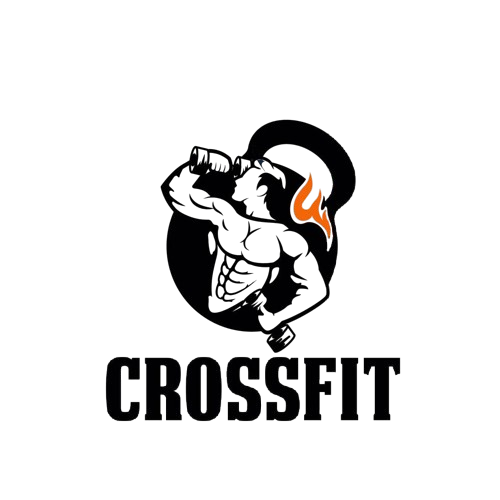Are you curious about the buzz around CrossFit and its infamous WOD? Whether you’re a seasoned athlete or a fitness newbie, understanding the concept of a “Workout of the Day” (WOD) is essential in the world of CrossFit. This article will demystify what WODs are, their significance, and how they can transform your fitness routine. Dive into the heart of CrossFit and discover how WODs challenge your limits, foster community, and push you to achieve unparalleled fitness milestones.
Defining WOD in CrossFit Context
In the realm of fitness and high-intensity workouts, CrossFit stands out for its unique approach to fostering strength, endurance, and versatility. At the heart of this rigorous training methodology is the concept of the Workout of the Day (WOD). This term encapsulates a core aspect of CrossFit’s philosophy: no two days are the same, and each workout is designed to test different dimensions of an athlete’s fitness. The WOD is not just a set of exercises; it is a daily challenge that combines various functional movements at high intensity. These movements are rooted in real-world activities, ensuring that CrossFit practitioners develop skills that enhance their everyday lives.
The beauty of the WOD lies in its scalability, making it accessible to individuals at all levels of fitness. Whether you are a seasoned athlete or a newcomer to the world of exercise, the WOD can be adjusted to match your current abilities, ensuring that you are constantly challenged but not overwhelmed. This adaptability is crucial for fostering long-term engagement and continuous improvement.
Moreover, the WOD encourages a sense of community and camaraderie among participants. By tackling the same set of exercises, individuals share in a collective experience, pushing each other to achieve their personal bests. This communal aspect is a key component of CrossFit’s appeal, creating a supportive and motivating environment for all involved.
| Element | Description | Benefit |
|---|---|---|
| Variability | Each WOD is different, introducing new exercises and challenges. | Prevents fitness plateaus and keeps workouts engaging. |
| Scalability | Exercises can be modified to suit various fitness levels. | Makes CrossFit accessible to a wider audience, promoting inclusivity. |
| Community | Shared workout experiences foster a supportive atmosphere. | Enhances motivation and accountability among participants. |
| Functional Movements | Focus on real-world applications of strength and agility. | Improves overall physical preparedness for daily activities. |
| Intensity | High-intensity nature of WODs maximizes fitness gains. | Efficiently improves cardiovascular and muscular fitness. |
Unlocking the Mystery: What Does WOD Mean in CrossFit?
In the realm of CrossFit, one term frequently emerges at the core of every session: WOD, or Workout of the Day. This pivotal component is not just a routine; it’s a tailored set of exercises aimed at pushing athletes to their limits, fostering both physical and mental growth. CrossFit’s philosophy hinges on varied, high-intensity, functional movements, and the WOD epitomizes this approach by ensuring that no two days are the same. This variability keeps the body guessing and challenges athletes to adapt, thereby enhancing their versatility and resilience.
Each WOD is designed to test different physical capabilities, ranging from stamina and strength to agility and speed. Whether it’s a grueling series of Olympic weightlifting movements, a sprint, or a bodyweight circuit, the WOD’s primary goal is to propel individuals out of their comfort zones. This is achieved through scalable intensity, allowing everyone from beginners to elite athletes to participate and progress. The communal aspect of completing the WOD alongside peers also cultivates a supportive and motivating environment, making it a cornerstone of the CrossFit community.
Further Insights into the WOD Phenomenon
Delving deeper into the philosophy behind the Workout of the Day, it’s evident that its benefits extend beyond physical conditioning. The WOD is structured to enhance psychological resilience, teaching participants to tackle challenges head-on and to persevere through adversity. This mental fortitude is a crucial takeaway, applicable in every walk of life. By facing these daily physical challenges, individuals learn to push their boundaries, set new goals, and celebrate their achievements, fostering a growth mindset that is invaluable both inside and outside the gym.
Key Components of a Typical CrossFit WOD
- Dynamic Warm-Up: Prepares the body for intense activity and reduces the risk of injury.
- Strength or Skill Work: Focuses on developing specific techniques or building strength in certain areas.
- The Main WOD: The core workout, varying in structure, intensity, and objectives daily.
- Cooldown and Recovery: Essential for reducing muscle soreness and aiding in recovery.
- Community Engagement: Encouragement and support from fellow CrossFit members.
Types of WODs: An Overview
The term “WOD,” which stands for Workout of the Day, is a cornerstone of the CrossFit training methodology. This approach to fitness is designed to enhance an individual’s competency at all physical tasks, using a varied mix of aerobic exercises, calisthenics, and Olympic weightlifting. WODs are central to this, providing a daily regimen that is both scalable to all fitness levels and challenging to the most experienced athletes.
There are several distinct types of WODs within the CrossFit program, each with its own set of goals and benefits. Among the most well-known are the Hero and Girl WODs, which are particularly challenging and are often named in honor of military, law enforcement, and first responder personnel who have died in the line of duty. These workouts not only serve as a form of tribute but also help to foster a sense of community and shared purpose among participants.
Other types of WODs include the AMRAP (As Many Rounds As Possible), EMOM (Every Minute on the Minute), and Tabata, which focus on high-intensity interval training. These workouts are designed to push athletes to their limits, improve cardiovascular endurance, and build muscular strength. Furthermore, the scalability of these workouts means that they can be adapted for a wide range of skill levels, making CrossFit an accessible and effective fitness option for a diverse audience.
Further Exploration of WOD Varieties
Delving deeper into the different types of WODs, it’s clear that each serves not only to challenge the participant but also to address different aspects of physical fitness. For instance, the AMRAP workouts emphasize endurance and mental toughness, encouraging athletes to maintain a high level of intensity over a longer period. On the other hand, EMOM workouts are structured to enhance precision and discipline, requiring the participant to execute a specific number of repetitions or a particular exercise every minute on the minute.
Key Components of WOD Structuring
Understanding the structure and purpose behind each WOD type can greatly enhance an athlete’s ability to benefit from the CrossFit program. It’s not just about the physical challenge but also about developing resilience, discipline, and a sense of community. These workouts are designed not only to test physical limits but also to foster a supportive environment where individuals can push past perceived barriers under the guidance of experienced coaches.
- Hero WODs: Challenging workouts named after fallen heroes to honor their memory.
- Girl WODs: Benchmark workouts that help athletes gauge their progress over time.
- AMRAP: Focuses on completing as many rounds as possible within a set time.
- EMOM: Encourages precision with a set task to be completed every minute.
- Tabata: High-intensity interval training that boosts cardiovascular fitness.
The Role of WODs in Training
Workout of the Day (WOD) is the backbone of CrossFit training methodology. These daily workouts are carefully designed to cover a wide range of physical disciplines, from strength and endurance to flexibility and agility. The versatility of WODs ensures that every aspect of a participant’s fitness can be challenged and developed over time. This approach to training is not only about variety but also about intensity. By pushing athletes to engage with high-intensity workouts, CrossFit aims to achieve unparalleled improvements in physical conditioning.
One key aspect of WODs in training is their scalability, which makes them accessible to individuals at different fitness levels. Whether you’re a seasoned athlete or a beginner, WODs can be adjusted to match your capabilities, ensuring that you’re always working at an optimal level of intensity. This customization is crucial for fostering progress without exposing individuals to the risk of injury. Furthermore, the community aspect of completing daily WODs together promotes a sense of camaraderie and mutual support, driving participants to push their limits and achieve their personal bests.
Additionally, the structure of WODs encourages consistent progress tracking. By regularly participating in these workouts, athletes can monitor their improvements in various physical domains, such as strength, speed, and endurance. This objective measure of progress is vital for motivation and for tailoring future training sessions to address any identified weaknesses. The dynamic nature of WODs, coupled with their rigorous demands, ensures that CrossFit practitioners are constantly evolving, breaking through plateaus to reach new heights of physical fitness.
| Aspect | Benefit | Example |
|---|---|---|
| Variety | Prevents boredom and overuse injuries | Different daily exercises |
| Intensity | Accelerates fitness improvements | High-intensity interval training |
| Scalability | Makes WODs accessible to all fitness levels | Adjustments in weights and intensity |
| Community | Provides motivation and support | Group workouts and challenges |
| Progress Tracking | Facilitates objective assessment of improvements | Regular benchmark WODs |
How to Prepare for a WOD
Preparing for a Workout of the Day (WOD) in CrossFit requires both physical and mental readiness. Start by ensuring you have a solid foundation in basic CrossFit movements to prevent injuries and improve your performance. Familiarize yourself with exercises like squats, deadlifts, and presses. Next, focus on your nutrition; eating a well-balanced meal a few hours before your workout can provide the energy needed for the intense activity ahead. Hydration is also crucial, so make sure to drink plenty of water throughout the day.
Another key aspect of preparation is mental readiness. Approaching your WOD with a positive mindset and setting realistic goals can significantly impact your performance. It’s essential to listen to your body and understand your limits, pushing yourself while also knowing when to pull back to avoid overexertion. Additionally, ensure you get enough rest the night before. Quality sleep aids in recovery and increases energy levels, making you better prepared for the challenges of the WOD.
Essential Gear for Your WOD
Choosing the right gear can also enhance your WOD experience. Invest in a good pair of cross-training shoes that offer support and flexibility for various exercises. Consider moisture-wicking clothing to help keep you cool and comfortable. Lastly, protective gear like gloves or knee sleeves can provide additional support and prevent injuries during high-intensity workouts.
| Item | Importance | Benefits |
|---|---|---|
| Cross-training shoes | High | Support and flexibility |
| Moisture-wicking clothing | Medium | Keeps you cool and dry |
| Protective gear (gloves, knee sleeves) | Optional | Support and injury prevention |
| Water bottle | High | Hydration |
| Nutrition (Pre-Workout Meal) | High | Energy provision |
Common WOD Formats Explained
In CrossFit, the Workout of the Day (WOD) is the backbone of the program, offering a mix of high-intensity functional movements that are constantly varied to challenge every aspect of your physical and mental endurance. Understanding the common WOD formats can help athletes to prepare effectively, ensuring that they meet their fitness goals while minimizing the risk of injury. Here, we explore several popular formats that you might encounter in a CrossFit box.
One of the most well-known formats is the AMRAP, which stands for “As Many Rounds (or Reps) as Possible.” Within a set time frame, athletes aim to complete as many rounds of a given circuit as they can, pushing their limits while maintaining proper form. Another popular format is the EMOM (Every Minute on the Minute), where athletes perform a specific number of reps of an exercise at the start of each minute, using the remainder of the minute to rest before the next set begins.
The For Time challenges are straightforward but demanding, requiring athletes to complete a predetermined sequence of exercises as quickly as possible. This format tests not only physical stamina but also mental toughness, as competitors race against the clock. Additionally, the Tabata protocol, a form of high-intensity interval training, consists of 20 seconds of ultra-intense exercise followed by 10 seconds of rest, repeated for four minutes. This method is celebrated for its efficiency and effectiveness in boosting both aerobic and anaerobic capacity.
Examples of CrossFit WOD Formats
These formats are just the tip of the iceberg when it comes to CrossFit’s diverse and challenging workouts. Each brings its unique benefits, from enhancing cardiovascular health and endurance to building strength, agility, and muscle mass. By regularly incorporating a variety of WOD formats into your training, you can ensure a well-rounded approach to fitness that keeps you engaged and continuously improving.
| Format | Description | Goal |
|---|---|---|
| AMRAP | Complete as many rounds/reps as possible in a set time. | Endurance, pacing, volume |
| EMOM | Perform specific reps of an exercise every minute on the minute. | Efficiency, consistency, recovery |
| For Time | Complete the workout as quickly as possible. | Speed, endurance |
| Tabata | 20 seconds of high-intensity work followed by 10 seconds of rest, for 4 minutes. | Aerobic and anaerobic capacity |
| Chipper | Complete a series of exercises in sequence, usually with high reps, once through. | Stamina, mental toughness |
Understanding these common WOD formats allows athletes to approach each workout with a strategy and mindset tailored to the task at hand. Whether focusing on speed, endurance, strength, or agility, CrossFit’s varied WODs provide a comprehensive fitness regimen that challenges and develops all aspects of physical performance. As you become more familiar with these formats, you’ll be able to anticipate the demands of each workout, adjust your pace and effort accordingly, and achieve your fitness goals more effectively.
Scaling Options for WODs
One of the foundational principles of CrossFit is its universal scalability, making it accessible and challenging for individuals at any level of fitness. When it comes to Workout of the Day (WOD) in CrossFit, modifying or scaling the workout is not only common but encouraged to fit the athlete’s current ability and fitness goals. Scaling ensures that each participant can perform the WOD safely, efficiently, and within their physical limits, while still pushing those limits and improving overall fitness.
Scaling can be applied in various ways, including adjusting the weight used in lifts, reducing the repetitions of certain exercises, substituting complex movements with simpler ones, or shortening the overall duration of the workout. The goal is to maintain the intensity and integrity of the workout, ensuring that each participant experiences a similar level of challenge and achievement.
Understanding When and How to Scale Your WOD
Knowing when to scale a workout is as crucial as knowing how. It often requires honest self-assessment and guidance from experienced coaches. Participants should consider scaling when facing movements that they cannot perform safely or effectively, or when the prescribed intensity of the WOD is beyond their current capabilities. Effective scaling respects the body’s limits while gradually extending them, fostering continuous improvement without risking injury or discouragement.
| Aspect | Scaling Down | Scaling Up |
|---|---|---|
| Weight | Decrease load | Increase load |
| Repetitions | Reduce number | Increase number |
| Movements | Simplify complexity | Add complexity |
| Duration | Shorten time | Lengthen time |
Measuring Progress Through WODs
Workout of the Day (WOD) is a core concept in CrossFit, a high-intensity fitness program that incorporates elements from sports and exercise types across the board. CrossFit WODs are designed to test and improve physical strength, stamina, and agility through a varied range of functional movements. Understanding and measuring progress through these WODs is crucial for both beginners and seasoned CrossFitters, as it provides a tangible way to track improvements in fitness levels, technique, and overall performance.
One of the primary benefits of CrossFit is its emphasis on quantifiable fitness. Every WOD is structured to challenge athletes in different aspects of their physical capabilities, be it cardiovascular endurance, strength, flexibility, power, or speed. By keeping detailed records of their performance in each WOD, CrossFit participants can see clear indicators of their progress over time. This might include faster completion times, increased weight loads, or more repetitions within a given time frame. Importantly, progress in CrossFit WODs often translates to improved functional fitness, meaning that the gains made within the confines of the gym carry over into real-world activities and general well-being.
Moreover, the community aspect of CrossFit encourages a culture of shared progress and accountability. Athletes often compare WOD results not as a competition but as a means to motivate and push each other towards personal bests. In this environment, measuring progress through WODs becomes not only a personal metric but a communal one, where improvements contribute to the collective success of the CrossFit box (gym). This unique blend of individual and group progress tracking fosters a supportive atmosphere that is conducive to sustained physical improvement and personal growth.
- Setting realistic and achievable goals based on past WOD performances
- Regularly updating WOD logs to track improvements in time, weight, and technique
- Using benchmarks and repeat WODs as direct measures of fitness progress
- Engaging with the CrossFit community to share progress and gain insights
- Periodically reassessing fitness goals in light of recorded WOD outcomes
By diligently measuring progress through WODs, CrossFit athletes can maintain a clear focus on their fitness journey, celebrating every improvement along the way. This methodical approach to tracking progress not only motivates athletes to push their limits but also provides a structured framework within which they can achieve significant fitness milestones. Whether you’re a CrossFit novice or a veteran, the key to unlocking your fitness potential lies in the consistent and thoughtful analysis of your WOD performances.
WOD Safety and Injury Prevention
When it comes to CrossFit, the Workout of the Day (WOD) is a core component that draws athletes together under the banner of fitness and personal improvement. However, the intensity and variety of these workouts demand a vigilant approach to safety and injury prevention. Understanding your own limits while progressively challenging them is essential for sustained progress and health. It’s crucial to start with a thorough warm-up to prepare the body for the demands of the WOD. This not only enhances performance but significantly reduces the risk of injuries.
Equally important is the role of proper form and technique. Whether lifting weights, performing gymnastic movements, or engaging in high-intensity cardio, maintaining correct posture and alignment is paramount. This is where the guidance of a qualified CrossFit coach becomes invaluable. They can provide immediate feedback and modifications to ensure that the exercises are performed safely. Furthermore, listening to your body and knowing when to scale a workout or to rest cannot be overemphasized. Overtraining can lead to injuries just as quickly as poor form can.
Lastly, recovery plays a key role in injury prevention. Adequate rest, coupled with proper nutrition and hydration, supports the body’s healing and rebuilding processes. Incorporating active recovery days and mobility work into your routine can also improve flexibility and reduce the likelihood of developing overuse injuries.
| Component | Importance | Examples |
|---|---|---|
| Warm-up | Prepares body, reduces injury risk | Dynamic stretches, light cardio |
| Proper Form | Critical for safety and effectiveness | Coach feedback, video analysis |
| Rest and Recovery | Supports healing, prevents overtraining | Sleep, nutrition, hydration |
| Listening to Your Body | Prevents pushing beyond limits | Modifying workouts, taking rest days |
| Mobility Work | Improves flexibility, reduces injury risk | Stretching, foam rolling |
In conclusion, while the allure of pushing your limits is at the heart of CrossFit, doing so with a mindful approach to safety and injury prevention ensures that you can continue to enjoy and benefit from your WODs over the long term. Remember, the goal is not just to be fit for a day, but to sustain a lifestyle of health and wellness indefinitely.
By adhering to these guidelines and making them a part of your routine, you set the foundation for a fulfilling and injury-free CrossFit journey. Let every WOD be an opportunity to better understand your body and its capabilities, as you strive towards your fitness goals with confidence and resilience.







